24 Hours Hotline: +86 137-3541-1378
Email:beijing@tripstoshanghai.com
24 Hours Hotline: +86 137-3541-1378
Email:beijing@tripstoshanghai.com
Introduction
The Forbidden City in Beijing stands as China’s most iconic imperial palace and a living symbol of the nation’s dynastic past. Once the exclusive domain of emperors and their courts, this vast complex embodies the height of ancient Chinese architecture, culture, and craftsmanship. As a UNESCO World Heritage site, it represents not only the political heart of old China but also the artistic and philosophical ideals that shaped the nation for centuries. With over 8,700 rooms spread across 720,000 square meters, the Forbidden City offers visitors a chance to step back in time — exploring grand halls, tranquil gardens, and exquisite relics that reveal the power and splendor of imperial life. Whether you’re a history lover, architecture enthusiast, or cultural explorer, this legendary site promises an unforgettable journey into China’s imperial legacy and provides a deep insight into the traditions that continue to influence modern Beijing today.
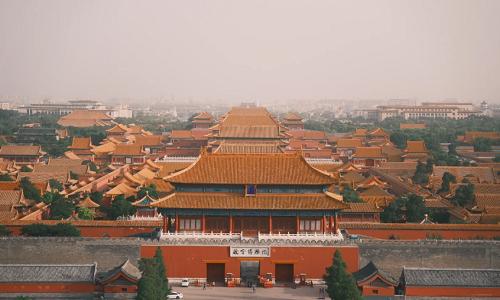
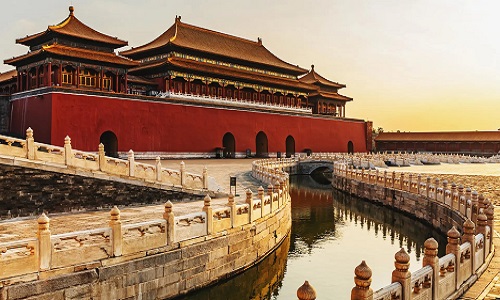
Historical Background
The Forbidden City was constructed between 1406 and 1420 during the reign of Emperor Yongle of the Ming Dynasty, marking one of the most ambitious architectural projects in Chinese history. Built to symbolize imperial authority and cosmic order, it served as the political and ceremonial heart of China for nearly 500 years, housing 24 emperors from the Ming and Qing Dynasties. Within its crimson walls and golden roofs, emperors ruled the nation, held grand ceremonies, and made crucial decisions that shaped Chinese history. The palace also contained a world of strict hierarchy and rituals — from the emperor’s secluded daily routine to the secret corridors used by officials and eunuchs to move unseen. Every hall, courtyard, and gate reflects the rigid structure of imperial life, making the Forbidden City not only an architectural marvel but also a vivid chronicle of China’s royal past. Today, it stands as a living museum, preserving countless cultural relics that reveal the sophistication and grandeur of China’s imperial civilization.
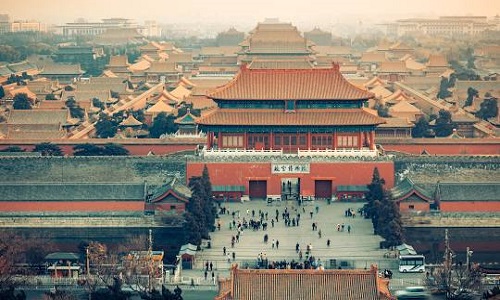
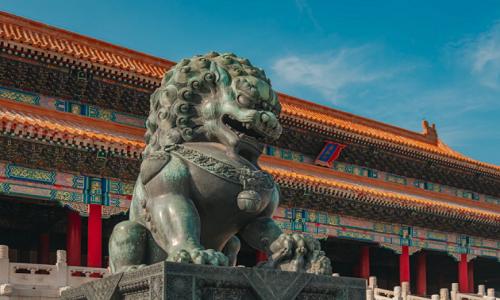
Top Experiences at the Forbidden City Recommended by Your Way Holiday
Architectural Highlights
The Forbidden City stands as the crowning glory of traditional Chinese architecture — a harmonious fusion of political authority, spiritual philosophy, and artistic perfection. Designed to mirror the cosmic order, its vast layout, ornate details, and symbolic decorations reflect the emperor’s supreme power and divine mandate. Every courtyard, roof tile, and carved beam tells a story of the empire’s hierarchy and grandeur. The precision and symmetry of the palace complex reveal the ancient Chinese belief that architecture should reflect balance and order in the universe. Walking through its golden roofs and crimson walls today is like stepping into a living masterpiece — one that still whispers tales of imperial splendor and timeless craftsmanship.
1. Layout of the Forbidden City
The Forbidden City’s layout follows a strict north-south axis — a design that perfectly embodies the Confucian ideals of harmony and order. The southern part housed the magnificent ceremonial halls, where emperors received officials and performed grand rituals, while the northern area contained the royal residences and tranquil gardens for the imperial family’s private life. This gradual transition from public to private mirrored the hierarchical nature of the court. Each gate and courtyard was carefully placed to control movement and symbolize power. Even the spacing between buildings was calculated to ensure both aesthetic beauty and functional flow. The entire complex reflects the ancient worldview that the emperor stood at the center of heaven and earth, maintaining cosmic balance.
.jpg)
.jpg)
2. Famous Structures
Among the thousands of buildings, a few iconic landmarks define the majesty of the Forbidden City. The Hall of Supreme Harmony (Taihe Dian), towering at the heart of the complex, served as the setting for imperial enthronements, New Year ceremonies, and celebrations of military victories. The Meridian Gate (Wu Men), the imposing southern entrance, was used by the emperor to issue imperial decrees and review troops. The Palace of Heavenly Purity (Qianqing Gong) served as the emperor’s residence, exuding elegance and solemnity, while the Hall of Mental Cultivation (Yangxin Dian) later became the nerve center of Qing administration. Each of these structures was built with perfect symmetry, lavish decoration, and a profound sense of order that reinforced the emperor’s absolute power.
.jpg)
.jpg)
3. Symbolism in Architecture
Every element of the Forbidden City carries layers of symbolic meaning tied to ancient philosophy and imperial ideology. The dominant yellow roofs symbolize the emperor’s exclusive right to rule under heaven, while red walls signify happiness, fortune, and prosperity. The frequent use of the number nine — from the nine rows of door nails to the nine mythical beasts perched on roof ridges — represents eternity and supreme power. The palace’s orientation aligns with feng shui principles, ensuring harmony with natural forces like wind and water. Dragons and phoenixes, painted or carved in wood and stone, express the union of male and female cosmic energies. Even the smallest ornament reflects a careful balance between beauty, symbolism, and spiritual meaning — an artistic language of authority and destiny.
.jpg)
.jpg)
4. Traditional Craftsmanship
The Forbidden City is a living tribute to the brilliance of ancient Chinese artisans, who combined artistry, engineering, and spirituality into one architectural vision. Constructed entirely of wood using sophisticated mortise-and-tenon joints, the structures have withstood centuries of weather and earthquakes without nails or glue. The glazed roof tiles, with their golden hues, were fired using precise techniques that gave them their luminous quality. Intricate carvings of dragons, cranes, and clouds adorn doors and beams, while vivid murals illustrate scenes of prosperity and harmony. Craftsmen from across the empire contributed their regional skills, blending fine lacquerwork, jade inlay, and stone carving into a seamless masterpiece. Every structure — from grand audience halls to delicate pavilions — reflects not just technical excellence but a cultural devotion to beauty, balance, and permanence.
.jpg)
.jpg)
Top Things to See and Do
Visiting the Forbidden City is an immersive experience that combines history, art, and culture in a single monumental setting. With over 8,700 rooms, numerous halls, and peaceful gardens, there is no shortage of incredible sights and experiences. Whether you are fascinated by imperial ceremonies, traditional architecture, or cultural artifacts, the palace offers something for every traveler. A well-planned visit ensures you capture the essence of the emperor’s world, explore hidden corners, and appreciate both the grandeur and the intimate details of this historical treasure. Beyond the main attractions, wandering the quieter corridors and lesser-known pavilions provides insight into the daily life of the court, the intricacies of palace management, and the artistic achievements that make this site unique. Every step through its courtyards and halls allows visitors to connect with centuries of imperial history and understand the cultural legacy preserved within these walls.
1. Guided Tour of the Main Halls and Courtyards
A guided tour provides essential context for understanding the Forbidden City’s scale and historical significance. Explore the Hall of Supreme Harmony, where emperors conducted official ceremonies, and the Hall of Central Harmony, used for preparation and rest during important events. Learn about the Hall of Preserving Harmony, famous for its grand imperial examinations and banquets. Courtyards connecting these halls reveal the symmetrical layout and strict hierarchy of the palace, offering insight into the organization and daily life of the imperial court. Knowledgeable guides share fascinating stories about emperors, concubines, and historic events that bring the stone and wood to life. In addition, guides often point out hidden features such as inscriptions, carvings, and architectural quirks that are easily overlooked by casual visitors, making the tour both educational and immersive.
.jpg)
.jpg)
2. Explore the Imperial Garden and Seasonal Scenery
The Imperial Garden, located at the northern end of the palace, provides a serene escape from the grand halls. Carefully arranged pavilions, rockeries, and ancient trees create a landscape of natural beauty infused with cultural symbolism. In spring, flowering plum and peach trees add bursts of color; summer offers cool shaded retreats; autumn showcases golden leaves; and winter turns the garden into a peaceful snowy wonderland. Strolling through this area allows visitors to experience the private leisure of emperors and appreciate the intricate artistry that blends nature with architectural elements. Many corners of the garden also feature small ponds, bridges, and stone sculptures, providing quiet spots for reflection and photography while revealing the subtle yet sophisticated tastes of the imperial designers.
.jpg)
.jpg)
3. Visit Special Exhibitions in the Palace Museum
The Forbidden City houses the Palace Museum, home to thousands of cultural relics, including imperial robes, ceramics, paintings, and calligraphy. Special exhibitions often highlight particular dynasties, ceremonial artifacts, or historical themes, giving deeper insight into the lives of the royal family and the empire’s cultural evolution. Visitors can see rare objects such as gilded thrones, ceremonial weapons, and intricate jade carvings, many of which have never left China. These exhibitions provide context to the opulence and sophistication of imperial life, offering a tangible connection to history that complements the grandeur of the palace itself. Additionally, temporary exhibitions often explore the palace’s restoration, conservation efforts, and the stories behind specific artifacts, giving visitors a behind-the-scenes view of how China preserves its heritage for future generations.
.jpg)
.jpg)
4. Photography Tips: Best Angles for Iconic Courtyards and Rooftops
Photography enthusiasts will find endless opportunities to capture the beauty of the Forbidden City. The central axis provides dramatic perspectives of the main halls aligned perfectly in symmetry. Courtyards framed by crimson walls and golden roofs offer classic shots, while the Imperial Garden and smaller pavilions provide intimate compositions. For rooftop photography, the outer galleries of certain halls give elevated views of the sprawling complex. Early morning or late afternoon provides softer light and fewer crowds, perfect for capturing the majestic scale and architectural details without interruptions. Photographers can also focus on intricate roof carvings, ornate doors, and decorative stonework to highlight craftsmanship. With patience and the right angles, visitors can create memorable images that convey both the palace’s grandeur and its delicate artistry.
.jpg)
.jpg)
Cultural Significance & Traditions
The Forbidden City is not just an architectural marvel but also a powerful symbol of Chinese political authority and cultural identity. For centuries, it served as the center of governance, where emperors exercised absolute power, issued decrees, and conducted elaborate ceremonies that reinforced the divine nature of their rule. Ceremonial practices, including coronations, imperial banquets, and ancestral rituals, were meticulously designed to reflect hierarchy, respect, and cosmic order. Dragons, phoenixes, and imperial colors were used throughout the palace to convey authority, prosperity, and harmony. Beyond its formal functions, the palace is rich with stories of intrigue, loyalty, and ambition — from emperor’s private lives and concubines’ influence to secret strategies and hidden passages — making it a living testament to China’s imperial heritage and cultural sophistication.
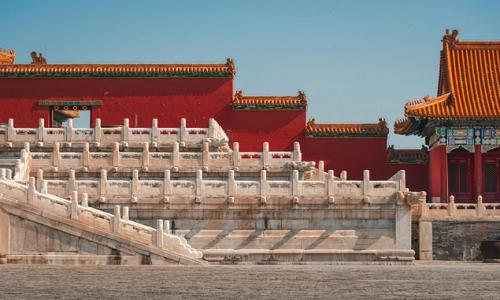
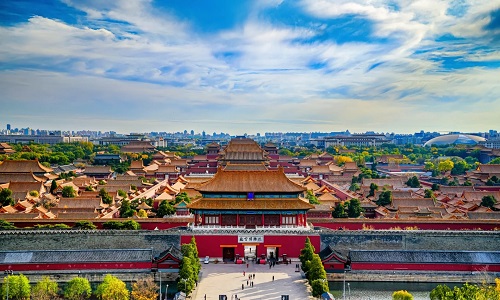
Seasonal Experience
1. Spring: Blossoming Gardens and Mild Weather
Spring brings the Imperial Garden to life, with plum, peach, and cherry blossoms adding vivid colors to the serene landscape. Mild temperatures make walking through the expansive courtyards and connecting halls comfortable, perfect for leisurely exploration. Spring is also ideal for appreciating the palace’s architectural details under soft sunlight. The season encourages a sense of renewal, and visitors can enjoy both indoor exhibitions and outdoor scenery without the heavier summer crowds.
2. Summer: Longer Daylight and Lively Atmosphere
Summer offers extended daylight hours, allowing visitors to explore more of the Forbidden City’s extensive halls and courtyards. The palace feels lively with tourists and guided tours, creating a dynamic atmosphere. Shaded walkways and the Imperial Garden provide cool retreats from the heat, while summer exhibitions often include special displays to celebrate historical festivals. Despite the larger crowds, the vibrant summer light enhances the golden roofs and red walls, making photography particularly striking.
3. Autumn: Golden Leaves and Crisp Air
Autumn is one of the most picturesque seasons in the Forbidden City. The trees lining the courtyards and gardens turn brilliant shades of gold, amber, and red, offering a stunning contrast to the crimson walls and yellow roofs. Cooler temperatures and crisp air make walking through the palace more comfortable, while the soft autumn sunlight creates ideal conditions for photography. Visitors can enjoy a more relaxed pace, capturing the beauty of both the gardens and architectural details in a serene and colorful environment.
4. Winter: Snow-Dusted Rooftops and Fewer Crowds
Winter transforms the Forbidden City into a tranquil and magical wonderland. Light snowfall dusts the rooftops, creating a stark yet beautiful contrast with the red walls and golden tiles. The palace is far less crowded, allowing for peaceful exploration and reflection. Winter light casts long shadows across the courtyards, emphasizing the intricate details of gates, roofs, and carvings. While temperatures may be chilly, the serene atmosphere, quiet paths, and unique snowy vistas make winter a special time to experience the grandeur and calm of the Forbidden City.
Top Experiences at the Forbidden City Recommended by Your Way Holiday
Nearby Attractions & Day Tour Options
The area surrounding the Forbidden City is packed with iconic Beijing landmarks, cultural sites, and vibrant streets that perfectly complement a visit to the palace. Exploring nearby attractions allows travelers to gain a deeper understanding of China’s history, modern life, and urban culture. Whether you’re interested in panoramic city views, bustling shopping streets, or historic monuments, these destinations provide a well-rounded experience and make for an ideal day tour around central Beijing. By combining these attractions into a single itinerary, visitors can enjoy a seamless mix of historical exploration, scenic enjoyment, and local culinary delights. Walking between sites gives a sense of the city’s layout, its imperial past, and how it has evolved into a lively modern metropolis, enhancing the overall travel experience.
1. Tiananmen Square – China’s Historic Political Center
Located just south of the Forbidden City, Tiananmen Square is one of the world’s largest public squares and a symbol of modern China’s political history. Visitors can see the Monument to the People’s Heroes, the Great Hall of the People, and the Mausoleum of Mao Zedong, each representing a significant era in China’s development. Walking across the vast square offers a sense of scale and history, and it’s an excellent spot for photography, especially during national celebrations and flag-raising ceremonies. Beyond its monumental architecture, the square is a gathering place for locals and tourists alike, where one can observe patriotic rituals, public events, and daily life, making it both a historical and contemporary cultural hub.
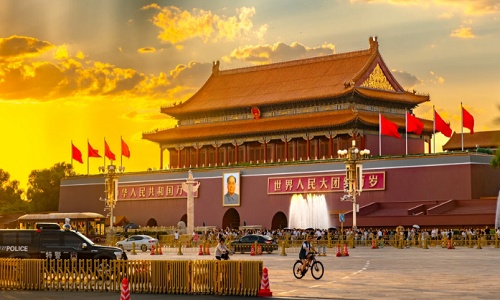
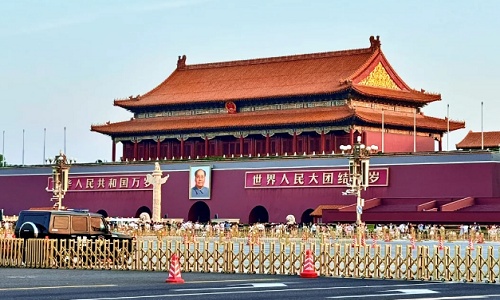
2. Jingshan Park – Panoramic View of the Forbidden City
A short walk north of the palace, Jingshan Park is a historic imperial garden offering the best panoramic views of the Forbidden City. Climbing the central hill rewards visitors with a breathtaking perspective of the golden rooftops aligned along the central axis. The park also features pavilions, traditional landscaping, and seasonal flowers, making it a perfect place to relax after exploring the palace. Early mornings or late afternoons provide soft lighting and fewer crowds, ideal for photography and enjoying the peaceful surroundings. The park’s elevated vantage point also allows visitors to appreciate the meticulous symmetry and planning of the Forbidden City, giving a sense of the palace’s grandeur that is not fully visible from ground level.
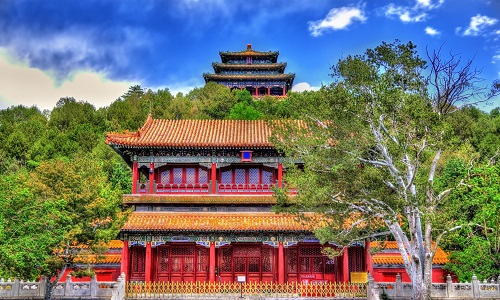
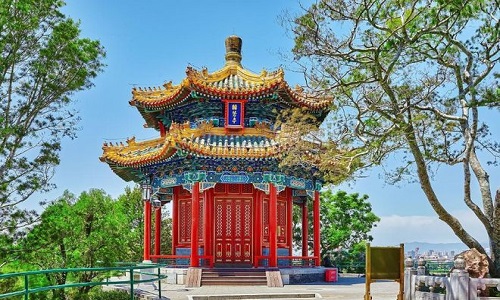
3. Wangfujing Street – Shopping, Street Food, and Local Culture
Wangfujing Street, located east of the Forbidden City, is a bustling commercial street that combines modern retail with traditional Chinese culture. Visitors can explore high-end stores, local boutiques, and snack stalls offering delicacies like candied fruits, dumplings, and exotic street foods. The street is lively both day and night, giving travelers a taste of contemporary Beijing life while staying close to historic landmarks. Wandering through Wangfujing provides an immersive experience of local flavors, sounds, and the vibrant energy of the city. Beyond shopping and food, the area reflects Beijing’s evolving cultural identity, blending modern architecture with traditional streetscapes, making it a must-visit destination for a holistic city experience.
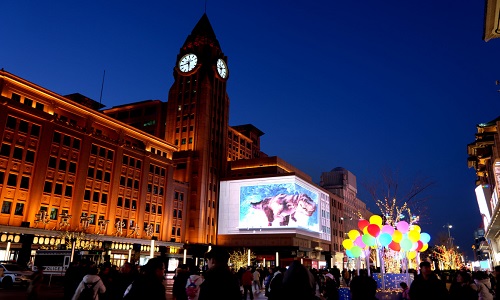
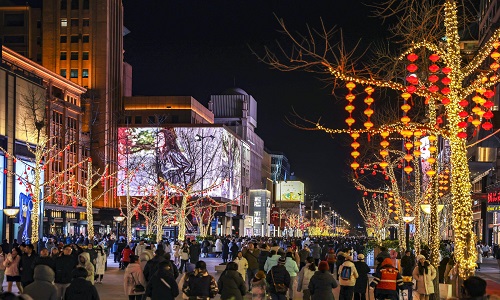
4. Temple of Heaven – Spiritual and Architectural Wonder
Located a short distance southeast of the Forbidden City, the Temple of Heaven is a magnificent complex where emperors of the Ming and Qing Dynasties once performed annual ceremonies to pray for good harvests. The temple’s circular main hall, known as the Hall of Prayer for Good Harvests, is an iconic symbol of Chinese architecture, featuring intricate wooden beams, vibrant paintings, and a perfectly balanced layout representing heaven and earth. Visitors can stroll through the expansive park surrounding the temple, which is filled with ancient cypress trees, walking paths, and open spaces where locals practice tai chi, dance, and play traditional instruments. This combination of historical architecture, spiritual significance, and lively local activity offers travelers a rich cultural experience. Early mornings are ideal for witnessing the local community in action, capturing both the serene beauty of the temple and the vibrant life of Beijing residents.
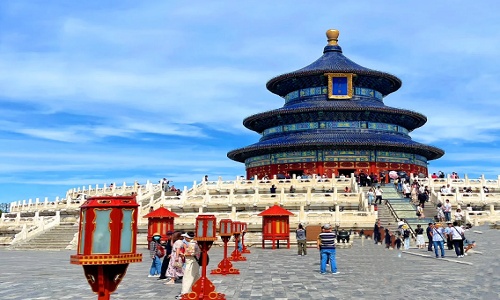
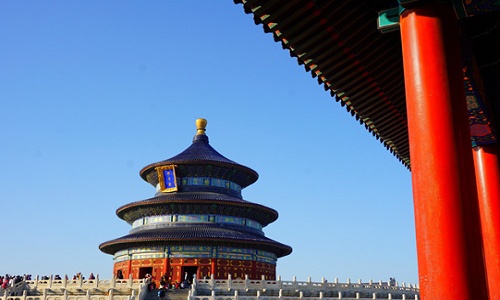
How to Get to the Forbidden City
1. By Subway – Tiananmen East/West Station
The most popular public transport option is the Beijing Subway, with Tiananmen East or Tiananmen West Station (Line 1) providing the closest access. From either station, it’s a short 5–10 minute walk to the main entrance at Meridian Gate. Signage is clear in English and Chinese, making navigation easy even for first-time visitors. Subway travel is budget-friendly, avoids city traffic, and is ideal for early morning visits to reach the palace before crowds arrive.
2. By Taxi or Ride-Hailing
For those seeking comfort and convenience, taxis or ride-hailing apps like DiDi provide direct access from hotels in central Beijing. This option allows visitors to arrive exactly at their preferred entrance and avoid long walks or subway transfers. During peak hours, traffic can be heavy, so it’s recommended to allow extra travel time. Taxis also offer flexibility for combining the visit with nearby attractions like Tiananmen Square, Jingshan Park, or Wangfujing Street.
3. Private Tour Option
A private guided tour is perfect for travelers who want an in-depth experience without the hassle of waiting in long queues. Professional guides provide historical context, highlight hidden details, and manage tickets in advance to ensure a smooth entry. Private tours can also be customized for families, photography enthusiasts, or history buffs, allowing visitors to explore at their own pace. This option maximizes the value of the visit, providing both convenience and a richer understanding of the Forbidden City’s grandeur and cultural significance.
Tips for First-Time Visitors on Route and Timing
1. Best Time to Visit
The optimal time to visit the Forbidden City is during spring (April–June) and autumn (September–October), when the weather is mild and the gardens are at their most vibrant. These seasons offer comfortable temperatures, clear skies, and natural light that enhances both sightseeing and photography. Visiting during off-peak months helps avoid large crowds and long queues, allowing you to experience the palace’s grandeur and serenity at a relaxed pace.
2. Early Morning Weekdays for Smaller Crowds
Arriving early in the morning, ideally right at opening time, is highly recommended. Weekdays are the least crowded, making it easier to explore the main halls, courtyards, and gardens without interruptions. Early visits also provide softer natural light for photography, particularly along the central axis and in the Imperial Garden. Additionally, starting your tour early allows ample time to explore surrounding attractions such as Tiananmen Square or Jingshan Park in the afternoon.
3. Avoid Major Public Holidays
Major Chinese public holidays, such as National Day (October 1–7) and Chinese New Year, attract massive crowds to the Forbidden City. During these times, long waiting lines, limited space in halls, and crowded courtyards can significantly diminish the experience. First-time visitors are advised to plan their trip outside these peak periods to enjoy a calmer, more immersive visit. Avoiding holidays also allows you to take guided tours at a relaxed pace and capture unobstructed photos of the palace’s intricate architecture.
Family-Friendly & Interactive Experiences
The Forbidden City offers more than just historical exploration—it provides a wide range of engaging activities designed specifically for families and children. With its vibrant architecture, sprawling courtyards, and countless stories of emperors, empresses, and palace intrigue, the palace creates unique opportunities for kids to experience history firsthand. Beyond simply walking through the halls, children can participate in interactive programs, games, and creative activities that turn learning about China’s imperial past into a dynamic adventure. These experiences not only educate but also entertain, ensuring that young visitors remain engaged while absorbing cultural knowledge, making the visit both memorable and meaningful for the entire family.
1. Hands-On Tours for Kids: Palace Map Treasure Hunts and Costume Experiences
Specialized tours for children often include palace map treasure hunts, which guide kids through the main halls, hidden courtyards, and serene gardens while encouraging them to solve clues and discover secret corners. These treasure hunts turn sightseeing into an interactive adventure, teaching children about the layout and history of the palace in an entertaining way. Costume experiences allow children to dress as emperors, princesses, or palace guards, adding a playful and imaginative element to the visit. Dressing up and participating in role-playing activities helps children immerse themselves in historical scenarios, creating lasting memories while learning about ancient traditions, rituals, and the daily life of imperial families.
.jpg)
.jpg)
2. Interactive Exhibitions in the Palace Museum
The Palace Museum offers a variety of interactive displays and hands-on exhibits that appeal to children and families alike. Young visitors can explore replicas of imperial robes, ceremonial objects, ancient tools, and jade artifacts, gaining a tangible sense of life in the Forbidden City. Multimedia installations, touchscreens, quizzes, and animated reconstructions help bring history to life, making complex concepts and cultural traditions easier to understand. By combining learning with play, these exhibitions capture children’s curiosity and attention, encouraging them to ask questions and explore further. The interactive approach complements traditional sightseeing, providing a richer, more immersive experience that makes history accessible and exciting for all ages.
.jpg)
.jpg)
Travel Tips
1. Wear Comfortable Shoes; Expect Long Walking Distances
The Forbidden City covers over 720,000 square meters with more than 8,700 rooms, so walking is inevitable. Comfortable, supportive footwear is essential for exploring the main halls, courtyards, gardens, and side alleys. Even short visits can involve several kilometers of walking, including uneven stone pathways and staircases. Wearing shoes with good traction will help prevent fatigue and slips, allowing visitors to fully enjoy the architectural details and serene courtyards without discomfort or injury.
2. Carry Water, Sunscreen, and Light Layers
Weather in Beijing can vary widely depending on the season, and the Forbidden City has limited shaded areas. Carrying a bottle of water keeps you hydrated during long walks, while sunscreen and a hat protect against strong sun, especially in summer. Light layers are recommended, as temperatures can change quickly from morning to afternoon. Dressing in breathable, comfortable clothing ensures that visitors remain comfortable throughout their tour, whether exploring the sunny courtyards or the cooler indoor halls.
3. Check Official Museum Website for Ticketing Updates
Tickets for the Forbidden City are limited, and online booking is recommended to avoid long queues or sold-out entries. The official Palace Museum website provides up-to-date information on ticket availability, pricing, and special exhibition schedules. Checking ahead also ensures that you are aware of any temporary closures, renovations, or changes in opening hours. For travelers planning to visit during peak seasons, early online reservations can save time and reduce stress, allowing more focus on enjoying the historical and cultural highlights.
4. Respect Palace Rules: No Climbing Walls, Stay on Designated Paths
The Forbidden City is a preserved UNESCO World Heritage site, and adhering to the rules ensures its protection for future generations. Visitors should refrain from climbing walls, touching artifacts, or stepping outside designated paths. Photography is allowed in most areas, but care should be taken to avoid restricted zones. Following these rules not only preserves the palace’s historic integrity but also maintains a safe and orderly environment for all visitors. Respectful behavior enhances the overall experience, allowing everyone to enjoy the majesty and serenity of this cultural treasure.
Fun Facts & Little-Known Secrets
The Forbidden City is full of fascinating surprises and hidden stories that go beyond its grand halls and beautiful architecture. As the world’s largest palace complex, it boasts over 8,700 rooms, many of which remain mysterious to the public. Some halls contain secret underground storage areas and hidden chambers used for safeguarding imperial treasures, documents, and ceremonial objects. Over the centuries, legends of ghosts, secret passages, and lost artifacts have captured the imagination of visitors and historians alike. In addition, certain rooms were deliberately designed with confusing layouts or hidden exits to protect the emperor and his family, while symbolic decorations, numbers, and colors throughout the palace carry hidden meanings rooted in Chinese culture and cosmology. These little-known details add layers of intrigue to the palace, making every visit a journey of discovery beyond the obvious splendor, and offering curious visitors endless stories to uncover at every turn.
Cultural Reflection & Visitor Experience
Visiting the Forbidden City is more than just sightseeing; it is an immersive journey into centuries of Chinese history and imperial culture. Walking through its majestic main halls and expansive courtyards, visitors experience a striking contrast between the grandeur of ceremonial spaces and the serene, intimate atmosphere of hidden gardens and quiet corridors. Each courtyard, gate, and pavilion tells a story of tradition, power, and artistry, allowing travelers to connect deeply with the lives of emperors and their subjects. Beyond its historical significance, the palace offers a sensory experience: the intricate carvings, vibrant colors, and harmonious layout evoke the philosophies and aesthetics of imperial China. The meticulous preservation and thoughtful presentation of artifacts enable visitors to appreciate not only the architectural brilliance but also the cultural symbolism embedded throughout. The Forbidden City’s enduring influence continues to inspire architects, historians, and tourists alike, offering a unique opportunity to reflect on China’s rich heritage and the timeless beauty of its imperial legacy, leaving each visitor with lasting impressions and a deeper understanding of Chinese civilization.
Top Experiences at the Forbidden City Recommended by Your Way Holiday
We design private and Tailor-made Beijing Tours customized to your style of travel at affordable local prices. We will provide a private & spacious car and a local professional tour guide with over 5 years guiding experience only work for you or your group. Transport, ticket, and dining (We find the most authentic dishes popular with locals) all we will arrange for you according your requirements. Please check our most popular tours below:
Are the above sample tour programs not suitable for you? Dont worry, our Beijing tours can be tailor-made based on your requirements and budget to create unique Beijing experiences that allow you to interact with the local people and culture. We are Beijing travel experts who know what your guidebook and foreign agencies don't. Our enthusiastic tour expert will promptly reply you in details within 24 hours.
Prev: No previous link
Next: Temple of Heaven
1. Where is the Forbidden City?
The Forbidden City is located in the center of Beijing's central axis. You can exit from exit b of Tiananmen east metro station of Beijing Metro Line 1, walk westward along the passenger flow to Tian'anmen Square, and then enter the Forbidden City through Tian'anmen Square.
2. Is the Forbidden city busy every day? Do I need to book tickets in advance?
The Forbidden city is one of the most popular scenic spots in the urban area of Beijing. The number of visitors per day is about 40000, and 60000 is the maximum. If you travel to the Forbidden city on weekdays, you can choose to leave early and buy tickets at the Wumen Gate. If you choose to go on weekends or holidays, please make sure to buy tickets 1-3 days in advance. Usually, you can book tickets on the official website or through us. For more information, please email to: chinaprivatetour@gmail.com
3. How long does it take to visit the Forbidden city?
The Forbidden City is the largest and most Collectible Museum in China, and most areas are not fully open. For the first time visitors to the Forbidden City, it usually takes 3-4 hours. There are many house and palace open in the tourist area, if you are interested in the history and culture of the Forbidden City, you can spend more time in each palace.
4. How much cost for the Forbidden city tickets? Any discount for children?
The entrance fee for Forbidden city is CNY60 for peak season (April.1 - Oct.31), CNY40 for low season (Nov.1 - Mar.31). It also has discount price for children, half price for children who under 1.2m; If they are study in China, you can get the discount price with student ID Card.
5. How to get to the Forbidden city by the public transportation, we are stay in our hotel?
By bus: The Forbidden city is located in the center of Beijing. There are many direct buses in the city. Before departure, you can check the bus to the Forbidden City according to the location of your hotel,or ask the front desk of your hotel.
By metro: The metro near the Forbidden city include: Line 1, Line 4, Daxing line, Line 5, Line 6, and Line 8. You can check the route to the Forbidden city according to your location and choose the nearest metro station.
By taxi: Take a taxi from your hotel, charge by meters.
6. Why is it called the "Forbidden City"?
In ancient astronomy, the ancients divided the sky into three regions: Taiwei, Ziwei and Tianshi. Ziwei, also known as "Purple Palace" and "Purple Mansion", has the highest status. In the past, the Palace Museum was only open to the emperor and all members of the royal family, and civilians could not enter. The emperor's status was as supreme as the God in heaven, so that the walls of the Forbidden City were all dyed purple, which was more noble and dignified than gold and silver. So the Forbidden City is also called the Forbidden City.
7. When was the Forbidden City built?
The Forbidden City was built in 1406 and completed in 1420, which is the beginning of the Ming Dynasty, tooks 14 years. In ancient times, the Forbidden City was also called the "Purple Palace". Its chief source was based on the Nanjing Palace Museum, which was the Royal Palace of the Ming and Qing Dynasties.
8. How big is the Forbidden City?
The Forbidden City has three main halls: Taihe hall, Zhonghe hall and Baohe hall. It covers an area of 720000 square meters, with a construction area of about 150000 square meters. There are more than 70 various palaces and more than 9000 houses. Beijing Forbidden City is one of the largest and best preserved ancient wooden structures in the world.
9. What to see in Forbidden city?
Forbidden City is one of the largest and best preserved ancient wooden structures in the world. You will see the various magnificent palaces, splendid halls, grand towers, wonderful pavilions and beautiful belvederes. Almost every corner is worth exploring. In addition, some precious collections will be displayed from time to time.
10. Could we take the pictures in the Forbidden City?
You can take photos during the tour, but it should be noted that the flash lights must be turned off when taking pictures in the palace and other rooms.
11. I'm planning to visit the Temple of Heaven by myself, could you advise some visiting route?
Temple of Heaven is one of the most popular tourist attractions in Beijing city. Normally, visitors will get into the park from the south Gate. Walking straight to the Circular Mound Altar where the Heaven Sacrifice Ceremony was held. Then, continue your visit to the Imperial Vault of Heaven, where the well-known Echo Wall challenges you for a try. Next, go straight through the Imperial Walkway Bridge, you will get to the Hall of Prayer for Good Harvests. At last, exit from the east gate of the Temple of Heaven.
Duration:7-8 Hours
Attractions(Cities):Tiananmen Square, Forbidden City, Temple of Heaven, Summer Palace
Tour Style:Experience the heart of Beijing on this one-day tour, designed to immerse you in the city’s rich history, culture, and beauty. Visit iconic landmarks such as Tiananmen Square, the Forbidden City, the Temple of Heaven, and the Summer Palace. Each site offers a unique glimpse into China’s imperial past, with expert guides sharing captivating stories and insights that bring history to life. As you explore, you’ll gain a deeper understanding of Beijing’s cultural heritage, from its grand palaces to its tranquil gardens. This Beijing tour offers personalized service, ensuring a comfortable and seamless experience. Whether you're a first-time visitor or returning to explore more, this tour is the perfect way to discover Beijing’s timeless treasures in a single, unforgettable day.
Duration:2 Days, 1 Night
Attractions(Cities):Temple of Heaven, Tiananmen Square, Forbidden City, Nanluoguxiang, Mutianyu Great Wall, Summer Palace
Tour Style:Embark on a fascinating 2-day adventure in Beijing, where history and modernity blend seamlessly. Begin with the majestic Temple of Heaven and the iconic Tiananmen Square, before discovering the grandeur of the Forbidden City, an imperial treasure trove. Explore the lively Nanluoguxiang, where traditional architecture meets vibrant city life. On day two, enjoy breathtaking views from the Mutianyu Great Wall, a marvel of ancient engineering, and immerse yourself in the serene beauty of the Summer Palace, with its lush gardens and elegant pavilions. This thoughtfully crafted tour offers the perfect mix of historical insights and cultural experiences, designed to captivate your senses and spark your curiosity, leaving you with lasting memories of Beijing.
Duration:3 Days, 2 Nights
Attractions(Cities):Tiananmen Square, Forbidden City, Temple of Heaven, Jingshan Park, Summer Palace, Kunming Lake Boat Riding, Nanluoguxiang, Panjiayuan Antique Market, Mutianyu Great Wall, Bird's Nest, Water Cube
Tour Style:Immerse yourself in Beijing’s rich history and vibrant culture with our exclusive 3-day private tour. Start by exploring Tiananmen Square and the majestic Forbidden City, then visit the serene Temple of Heaven. Enjoy sunset views from Jingshan Park and a scenic boat ride on Kunming Lake at the Summer Palace. Wander through the lively Nanluoguxiang Hutong, hike the breathtaking Mutianyu Great Wall, and marvel at the modern Bird’s Nest and Water Cube. This personalized tour seamlessly blends historical landmarks, cultural experiences, and stunning architecture, ensuring an unforgettable journey. Every moment is designed to captivate, inspire, and leave you with lasting memories of Beijing’s unique charm and diverse beauty.
Duration:5 Days, 4 Nights
Attractions(Cities):Mutianyu Great Wall, Bird's Nest, Water Cube, Qianmen Street, Morning Market, Forbidden City, Tiananmen Square, Jingshan Park, Temple of Heaven, Nanluoguxiang, Facial Makeup Painting, 798 Art Zone
Tour Style:Immerse yourself in Beijing’s rich culture and history with our comprehensive Beijing tour package. This thoughtfully crafted itinerary takes you to iconic landmarks such as the Mutianyu Great Wall, Forbidden City, and Tiananmen Square, alongside modern architectural wonders like the Bird’s Nest and Water Cube. Experience local life at Qianmen Street and the Morning Market, and discover the city’s vibrant art scene at the 798 Art Zone. Engage in hands-on activities, including traditional facial makeup painting. With expert guidance from a seasoned Beijing travel expert, this tour seamlessly combines historical exploration with cultural immersion, offering an unforgettable Beijing experience. Each moment is designed to leave you with lasting memories of this dynamic city.
Duration:10+ Hours
Attractions(Cities):Terracotta Warriors and Horses Museum
Tour Style:Embark on a captivating day trip from Beijing to Xi'an to explore the iconic Terracotta Warriors. This Beijing-Xi'an tour offers a fascinating journey through ancient Chinese history, highlighting the world-renowned Terracotta Army. Visit this monumental archaeological site, home to thousands of life-sized soldiers, horses, and chariots, each crafted with intricate details. With the guidance of an expert, learn about the historical significance of these remarkable figures and their role in China’s ancient imperial past. Enjoy seamless travel and smooth logistics, ensuring a stress-free experience as you delve into the history and culture of this extraordinary site. This day trip promises an enriching and memorable exploration of one of China’s most treasured landmarks.
Wechat: Chinaprivatetour
24 Hours Hotline:
+86 137-3541-1378
(Your Privacy is Protected)
1 to 1 tailor-made service from our professional travel advisors for the most sophisticated
Constantly excellent reviews for attraction, hotel and service Competitive price
Local experts provide quality tours Best selected knowledgeable local guides Authentic local restaurants
7*24 hours available to create you a worry-free tour. No Hidden Fees and absolutely no pressure to buy. Secured








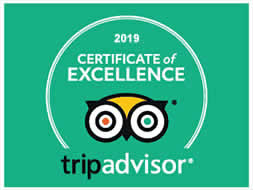
Copyright © 2017 Chinabeijingprivatetour.com All rights reserved. 浙ICP备18056007号-2
Dears, this is Sara and I will spend a couple of days in Beijing with some colleagues next week. We have Monday 21.10 free and wanted to ask of it is possible to arrange private tours of the Forbidden City on this day?
I read the Palace is closed on Mondays but maybe private tours are still possible?
Thanks a lot in advance!
Sara
Replied:17 October 2024
Dear Sara Pizzamiglio,
Thank you for reaching out to "Your Way Holiday"! We are thrilled to assist you in planning your upcoming journey and appreciate your interest in our preliminary itinerary.
The proposed itinerary is a starting point, and we are more than happy to tailor it to your specific preferences and requirements. If there are particular places you'd like to visit or special arrangements you have in mind, please feel free to let us know. Our goal is to create a personalized experience that aligns perfectly with your expectations.
Additionally, as the itinerary is still in the preliminary stages, we can make adjustments based on your flight details to ensure a seamless travel experience. Whether it's accommodating specific flight schedules or incorporating additional destinations, we are here to make your journey as enjoyable and stress-free as possible.
Please take your time to review the proposed itinerary, and let us know if there are any specific changes or additions you would like to make. We are dedicated to crafting a memorable travel experience tailored to your preferences.
I'm pleased to inform you that the Summer Palace is open every day. We can certainly arrange a day tour for you that includes both the Forbidden City and the Summer Palace. We will send you a detailed quote and further information shortly.
Feel free to let me know if you have any questions or need a help. Thanks.
www.chinahangzhoutour.com --- Hangzhou & And Nearby
www.tripstoshanghai.com --- Shanghai & And Nearby
www.suzhouprivatetour.com --- Suzhou
Your Way Holiday - Your trusted partner for private tours in China!
Explore more with us:
www.chinahangzhoutour.com --- Hangzhou, Fujian, Xiamen, Jiangxi and Nearbywww.tripstoshanghai.com --- Shanghai, Guangzhou, Shenzhen and Nearbywww.suzhouprivatetour.com --- Suzhou, Nanjing, Wuxi, Yangzhou and Nearbywww.xianprivatetour.com --- Xi'an, Gansu, Xinjiang, Silk Road and Nearbywww.chinabeijingprivatetour.com --- Beijing, Harbin, Snow Town, Inner mongolia, Luoyang and Nearbywww.chengduprivatetour.com --- Chengdu, Tibet, Guilin, Chongqing, Guizhou, Yunnan, Zhangjiajie and Nearby